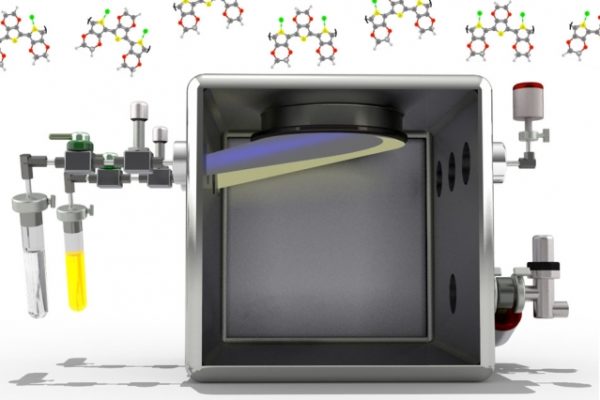Scientists at Massachusetts Institute of Technology have developed a transparent conductive material they say could be further fine-tuned to achieve performance comparable to current commercial solutions. The group demonstrated the material could be incorporated into a perovskite solar cell and was shown to increase stability and efficiency.
Solar cells rely on a transparent, electrically-conductive material to transport electricity from the cell where it is generated into the larger system. Such components are also valuable in touch screen technology and other applications and materials exhibiting both the required properties are rare.
The most common transparent conductive oxide (TCO), according to MIT, is indium tin oxide (ITO). used in many solar cells. TCO, however, features rare, expensive materials and, according to MIT is quite brittle and tends to crack after a period of use.
Two years ago, the MIT group began working with an organic polymer known as PEDOT which showed potential but was a long way from being able to match the performance of ITO. The group’s latest results, published in Science Advances, show a dramatic improvement, though the material still lags behind indium titanium oxide.
Siemens per centimeter
The MIT researchers state combined transparency and conductivity is measured in siemens per centimeter with ITO having a figure which ranges from 6,000-10,000. Using a newly optimized process of oxidative chemical vapor deposition – which deposits a layer a few nanometers thick in a structure of horizontally-aligned crystals to increase conductivity – the MIT material achieved 2,800 siemens/cm.
Popular content

The Science Advances paper also describes how the group synthesized a ‘double A’ cesium formamidinium lead iodide perovskite solar cell, and incorporated a 15 nanometer PEDOT film as the hole transport layer. The results showed cells incorporating MIT’s material performed considerably better than others fabricated for comparison, in which the new PEDOT film was substituted with a commercially available PEDOT:PSS material.
The PEDOT cells exhibited average efficiency of 17.2%, compared with 15.5% for the comparison group. In stability testing, the cells maintained 76% of their initial efficiency after 42 days in ambient air, compared with just 37% for the comparison cells.
The group also noted the process for manufacturing their coating is simpler than that used to produce other commercial TCO materials as it requires a relatively low temperature of 140 degrees Celsius and just a single process step of depositing the material directly onto a substrate.
While the material has not been demonstrated at a larger scale, the researchers are confident of scaling up results. “There is no technical barrier to moving this forward,“ said MIT professor Karen Gleason. “It’s really just a matter of who will invest to take it to market.”
This article was amended on 02.12.2019 – ITO commonly refers indium tin oxide, not indium titanium oxide.
This content is protected by copyright and may not be reused. If you want to cooperate with us and would like to reuse some of our content, please contact: editors@pv-magazine.com.



ITO is tin doped indiumoxide and not indium titanium oxide. Ti can be used as a dopant in indiumoxide, but this in almost all commercial products not the case.
Dear Paul,
Thanks a lot for your comment – I believe you are correct, although the announcement from MIT does refer to titanium rather than tin.
ITO is indium tin oxide, not indium titanium oxide.
Dear Matt,
Thanks for your comment. MIT’s announcement does refer to indium titanium oxide. I think that is probably a mistake though, which I did not think to question yesterday.
This is not something new, PEDOT and PEDOT:PSS have been studied by many groups as TCO instead of ITO ( indium tin oxide). Just google TCO-free solar cells and you will find them.
Hi Brad,
It is a newly developed coating, reported in a peer reviewed journal. My article does not claim that it is a completely new class of materials.